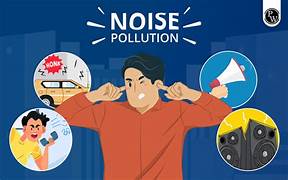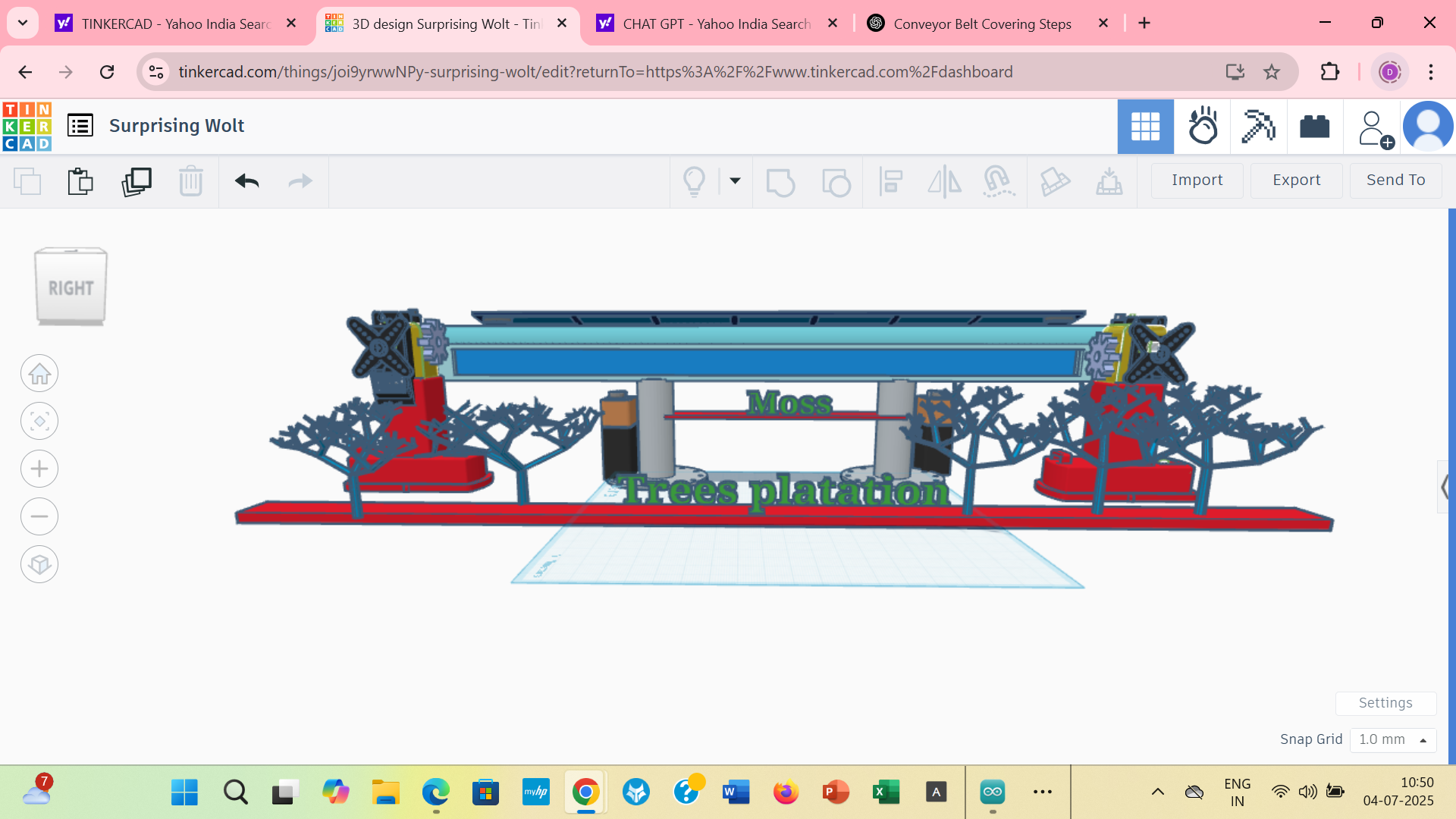A lot of noises coming from conveyer belt of factories which causes harmful effects like head pain and eye problem etc.
we can use the noise barriers for the sound so that it doesn't cause the issues of noise pollution
Sarlanagar ,maihar ,madhya pradesh , India
Solution
| Component | Description |
|---|---|
| Technical Components | ### Comprehensive Analysis #### 1. Technical Components Needed To reduce noise in daily life as per the provided solution, the following technical components are required: 1. **BLDC Motors**: Brushless DC motors to replace traditional motors in fans, appliances, and transportation for reduced noise and energy consumption. 2. **Soundproof Materials**: Soundproofing materials for windows and conveyor belt enclosures. Ideal materials should be flexible, cost-effective, and provide multiple layers of sound insulation. 3. **Conveyor Belt Enclosures**: Enclosures made of soundproof materials to reduce noise from conveyor belts in factories. 4. **Noise Sensors**: High-tech sensors to detect noise levels and possibly trigger noise reduction mechanisms. 5. **Sound Barriers**: Physical barriers to block noise, especially in areas near residential zones or public spaces. 6. **Electric Appliances**: Preference for electric appliances like fans and vehicles that use BLDC motors and produce less noise. #### 2. Recommended Tech Stack The solution is primarily focused on hardware (soundproofing materials, motors, sensors) and spatial planning (locating noise sources away from residential areas). There is no clear software component mentioned, but if sensors or automated noise management are involved, the tech stack could include: 1. **Microcontrollers/Controllers**: For managing BLDC motors (e.g., Arduino, Raspberry Pi). 2. **Sensors and Detectors**: Noise detection sensors (e.g., sound level meters). 3. **Basic Electronics**: For integrating noise sensors, power supplies, and simple control systems. No complex software is implied. 4. **Mechanical Design**: For designing enclosures and barriers. The formats and usage patterns mentioned are basic, so no advanced software stack is required until further detailed specifications are provided. #### 3. Detailed Implementation Steps 1. **Research and Select Materials**: Identify cost-effective, flexible materials for soundproofing (e.g., acoustic foam, mass-loaded vinyl) and test them in small-scale setups. 2. **Design and Build Conveyor Enclosures**: - Measure the dimensions of conveyors in factories. - Design enclosures using soundproof materials, ensuring accessibility for maintenance. - Implement a multi-layered approach, ensuring gaps are minimized. 3. **Deploy Sound Barriers**: - Identify noise hotspots in factories or near residential areas. - Erect sound barriers using dense materials (e.g., concrete, specialized acoustic panels). 4. **Replace Motors with BLDC**: - Audit existing motors in appliances, fans, and transportation. - Gradually replace them with BLDC motors. 5. **Integrate Noise Sensors**: - Place sensors to monitor noise levels. - If needed, connect sensors to actuators for automated noise control (e.g., adjusting motor speed dynamically based on noise levels). 6. **Relocate Noise Sources**: For factories, assess the possibility of moving conveyor belts or noisy machinery away from sensitive areas (villages, cities). #### 4. Required Technical Learning 1. **BLDC Motors**: Understanding how they work, how to control them, and how to retrofit existing systems. 2. **Acoustic Engineering**: Basics of soundproofing and materials science. 3. **Electrical Engineering**: Basic skills for handling low-voltage systems (if integrating sensors, enclosures with powered components). 4. **Mechanical Design**: For creating effective enclosing structures. #### 5. Budget Calculation *This is a rough estimate based on assumed usage, quantities, and market research. Real costs will vary based on specific requirements and local factors.* 1. **Hardware Costs**: - **BLDC Motors**: Depending on power rating, ~$50 to $500 per motor (small to medium sizes). For factory-scale, per unit costs could be higher (for large machinery). - **Soundproof Materials**: Cost varies. Acoustic foam: ~$20 to $50 per m². Mass-loaded vinyl: ~$5 to $10 per m². Considering a small factory (1000 m² coverage), material costs could range from $5,000 to $50,000 (depending on material choice and layering). - **Noise Sensors**: Basic sound level meters: $100 to $250 each. Advanced sensors with connectivity: $500+. - **Conveyor Enclosures**: Custom fabrication will vary, but cost per unit could be between $1,000 to $10,000 depending on size and material. - **Sound Barriers**: $\sim$100 per linear meter for simple barriers, higher for advanced designs (up to $500/m²). Estimated Total Hardware Cost: ~$50,000 to $200,000 per small-medium factory (excluding BLDC replacements). 2. **Software Costs**: None explicitly required unless further automation is implemented (in which case licensing of microcontroller platforms, additional sensors, etc., would be needed). 3. **Maintenance Costs (First Year)**: - ~10% of the total hardware cost would be a fair estimate (maintaining sensors, repairing enclosures, calibration checks). Estimated Maintenance: $5,000 to $20,000. 4. **Additional Costs**: - If moving conveyor belts or machinery is required, relocation and construction costs could be significant ($50,000+ per site). #### Total Estimated Budget For a small-scale implementation (single factory with 10 motors, basic enclosures, and 50 m of sound barriers) the total hardware cost could be ~$50,000, with ~$5,000 maintenance in the first year. Large-scale implementations (multiple factories, full retrofitting of machinery, and soundproofing) may require upwards of $200,000 in initial costs and $20,000 maintenance per year. If relocation is involved (step 5), costs will substantially increase ($100,000+). However, this is not always feasible, so initial budgets may exclude relocation. |
| Key Features |
Feature: WE CAN COVER THE CONVEYER BELT THAT BREAK THE NOICE COMING TO US
Format: SOME MATERIALS WHICH ARE FLEXBALE Usage: THE SOUND WILL NOT COME OUT
Feature: WE CAN USE SOUND PROOF MACHINES WHICH CAN BE IMPLEMENTED IN FACTORIES
Format: THERE WILL BE SENSORS AND HIGH TECHNOLOGY TO CODE IT IT CAN SENCE THE SOUND Usage: THE SOUND WILL NOT COME OUT |
| Implementation Steps | 1. WE SHOULD MAKE THE COVERING OF SOME MATERIAL WHICH IS IDEAL AND COST EFFECTIVE AND SENSORS. 2. WE SHOULD USE MORE LAYER OF SOUND PROOF MATERIALS. 3. THERE SHOULD BE LARGE PRODUCTION OF METALS AND SENSORS. 4. WE SHOULD KEEP IT IN SHORT DISTANCES FROM US . 5. THE CONVEYOR BELT SHOULD BE AWAY FROM THE VILLAGES , CITIES AND FACTORY COLONIES ALSO. |

